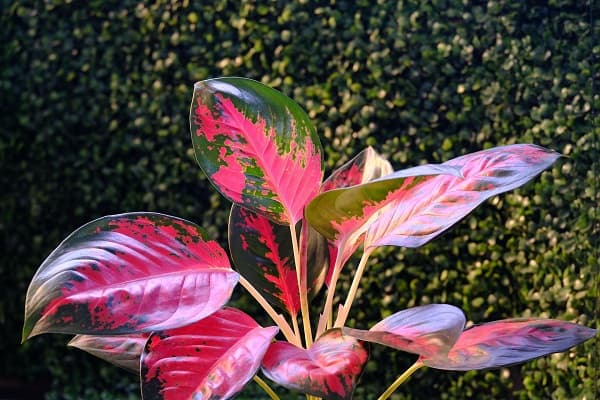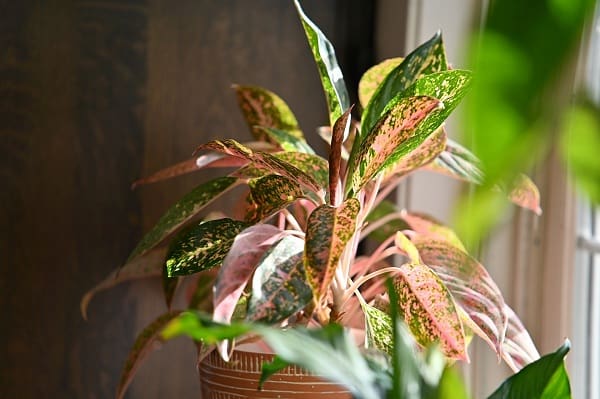The Chinese Evergreen is a beautiful, leafy plant that is popular as a houseplant. This plant is native to eastern and southern China and is the best houseplant in many parts of the world. It is easy to grow and care for and can tolerate a wide range of growing conditions. The Chinese Evergreen is an excellent plant for beginners, as it is very forgiving of mistakes.
Aglaonema is known for its beautiful foliage, which can range in color from green to brown. The plant is also known for its ability to remove harmful toxins from the air, making it a great choice for people who want to improve the quality of their indoor air.
| Plant name | Chinese Evergreen |
| Botanical Name | Aglaonema |
| Toxicity | Dogs (labradors), cats |
| Bloom Time | Spring, summer |
| Family | Araceae |
| Sunlight | Partial and full shade |
Chinese Evergreen Care
A Chinese evergreens is a beautiful and easy-to-care-for houseplant that does not require much upkeep. The main thing to remember when caring for a Chinese evergreen is that the lighter the variegation on the plant’s leaves, the more sunlight it will need. Beyond that, Chinese evergreens prefer warm and moist conditions. With proper care, a Chinese evergreen can last for many years.

Light
To provide adequate light for a Chinese evergreen plant, place it in an area that receives bright, indirect light. If the leaves start to turn yellow, that indicates that the plant is not receiving enough light.
The leaves of aglaonema plants are generally tolerant of partial shade, though some varieties may be more sensitive to low light than others. In general, these plants prefer bright, indirect light but can tolerate some direct sun if necessary. If grown in too much shade, however, they may produce fewer leaves and have less vibrant coloration.
soil
The best soil for a Chinese evergreen is a well-drained, slightly acidic potting mix. You can make your own potting mix by mixing equal parts peat moss, perlite, and sand.
Alternatively, you can purchase a commercial potting mix designed for use with tropical plants. If your garden soil is heavy, mix in some perlite or sand to improve drainage.
water
The amount of water that a Chinese evergreen needs will depend on the size of the plant and the pot it is in. A small plant in a pot will need less water than a large plant in a pot. If the pot is too small, the plant will not be able to get enough water and will dry out.
The best watering method for aglaonema plants is to water them deeply and then allow the soil to dry out completely before watering again.
The best type of water to use for Chinese evergreen plants is filtered water. This will help to remove any impurities that
could potentially harm the plant. Tap water can also be used, but it is important to let it sit for a few hours to allow the chlorine to evaporate before watering the plant.
Propagating Chinese Evergreen
To propagate Chinese evergreen, fill a pot with well-draining potting soil and plant the leafy cutting in the pot. Water the cutting well and place it in a warm, bright spot. Keep the soil moist but not soggy, and in a few weeks, roots will form and new growth will appear.
you will need to take a stem cutting from an existing plant. Cut a stem that is about 6 inches long and has at least two leaves on it. Remove the bottom leaves from the stem, and then dip the cut end of the stem into rooting hormone.
Next, plant the stem cutting in a pot filled with moistened potting mix. Be sure to keep the potting mix moist, but not soggy. Place the pot in a warm, bright location, and new roots should appear within 4-8 weeks.
Water the plants regularly and fertilize them monthly during the growing season.
Temperature and humidity
plants prefer warm temperatures and high humidity levels. They will do best if kept in an environment where the temperature is between 65 and 75 degrees Fahrenheit and the humidity level is above 60%.
If the temperature drops below 55 degrees Fahrenheit or the humidity level drops below 40%, the plant may start to experience problems such as leaf drops.
Fertilizer
To keep your plant healthy and thriving, fertilize it regularly with a balanced fertilizer that contains nitrogen, phosphorus, and potassium.
Apply the fertilizer every two weeks during the growing season, and every month during the winter. once every one to two months using a balanced fertilizer with an N-P-K ratio of 20-20-20.
Common Pests and Plant Diseases
There are a few common pests and plant diseases that can affect Chinese evergreen plants. These include mealybugs, spider mites, scale, root rot, and fungi. Mealybugs and spider mites are both sucking insects that can damage the plant by feeding on its sap.
Scale is a hard, Shell-like insect that can also damage the plant by feeding on its sap. Root rot is a fungal disease that can damage the plant’s roots, and fungi can cause leaves to yellow and drop off.
Plant diseases that can affect Chinese evergreen include root rot, Rhizoctonia root, stem rot, and botrytis. These diseases can cause plant death.
Common Problems With Chinese Evergreen
- Aglaonema is susceptible to a number of problems, including insect infestations, disease, and poor growing conditions.
- Common problems with Chinese evergreens include mealybugs, spider mites, scale, root rot, and leaf spot.
- The plant can be damaged by too much sun, too little sun, too much water, too little water, or poor drainage.
- To prevent problems with this plant, provide the plants with proper care, including the right amount of sun, water, and drainage.
FAQ
Is Chinese evergreen a good indoor plant?
Yes, Chinese evergreen makes an ideal houseplant that is easy to care for. It does best in bright, indirect sunlight but can also tolerate low light conditions. The plant is known for its air-purifying qualities, making it a great choice for improving indoor air quality.
Do Chinese evergreen plants grow fast?
Yes, Chinese evergreen plants can grow quite quickly if they are cared for properly. These plants prefer humid conditions and warm temperatures, so they will do best in greenhouses or places with similar conditions. With the right care, these plants can reach their full potential size quite quickly.
What are some of the most popular Chinese evergreen plant varieties?
1. Chinese Evergreen (Aglaonema modestum)
2. Red Chinese Evergreen (Aglaonema sinensis)
3. Silver Chinese Evergreen (Aglaonema silver queen)
4. Snowy Chinese Evergreen (Aglaonema snow white)

